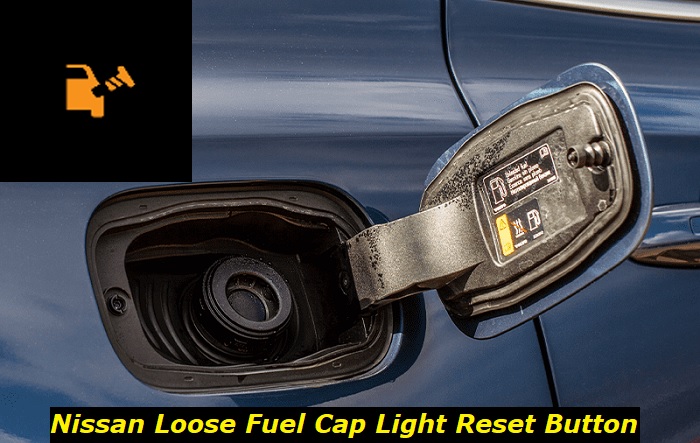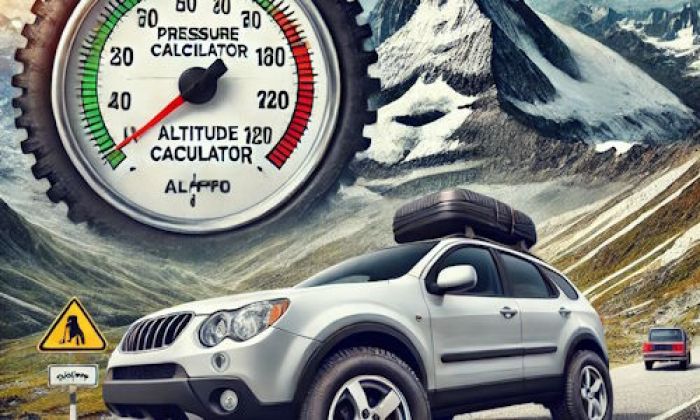There is no special button that would reset the "Loose Fuel Cap" warning in your Nissan, but you can reset the message quite easily. For this, you will need to retighten the fuel cap, restart the car, and give it some time. Also, you may press and hold the trip computer button or use some other tricks that I will tell you in this article.
Car software settings problems highlights
- Howcommon:very common
- Main reasons:hard-to-operate software, glitch, hardware issues
- DIY diagnosis:possible
- DIYrepair:possible
- Solutions:resetting, learning how to set, asking for professional help
- Can you drive?yes
- Price in dealership:$150 - $250

Why do you see the "Loose Fuel Cap" message in your Nissan?
So, each Nissan car made within the recent decade is equipped with a system that controls vapor leaks from the fuel tank and other systems. It means that if there is an air leak and the sensor feels it, it will most likely launch the code in the ECU which will result in the check engine light and also the message on the dash saying "Loose Fuel Cap".
While in most cases it actually means that your fuel cap is loose, sometimes, this may mean that the system has some other leak and you need to check it.
Here are some examples of what can trigger this message:
- the loose fuel cap - the most common reason that is easy to avoid or solve;
- the faulty cap - older caps get loose because of damages or just because they are worn and need a replacement;
- a hole in the filler neck - this will create the leak and the sensors will obviously register it and launch the "Loose Fuel Cap" message;
- bad connection between the filler neck and the fuel tank - this may also cause air leaks;
- a hole in the fuel tank because of rust or mechanical damage;
- faulty leak sensors in the evaporation control system;
- glitchy ECU launching random codes because of bad voltage, water damage, or other issues.
As you see, the loos cap is not the single problem that can launch this nasty message that doesn't want to go away. Sometimes, checking those problems is not that easy, especially when you don't have access to the tank and can't visually inspect the system. For this, you will need to lift a car on the lifter and most likely have some equipment to look at the filler neck.
Is there a reset button for the "Loose Fuel Cap" message?
Unfortunately, there are no buttons that can specifically reset this message and code. It would be weird if Nissan started introducing new buttons all over your car to just reset some random codes. This way, the entire Nissan interior would be covered with buttons.
But, in some cars, you can still use certain buttons to reset this code. In most cases, the role of this button plays the trip computer button, the screen reset button, or the info button. You won't reset the message just by pushing these buttons randomly, you will need to make sure that you follow the procedure for resetting the error code.
How to reset the "Loose Fuel Cap" message?
You can reset the message only in that case if the culprit for this is the poorly tightened fuel cap. So, here's how you can do that in any Nissan car:
- Turn off the engine. This will allow you to stop sensors from sending their readings every single second to the ECU.
- Open the gas door and unscrew the fuel cap. It's important to unscrew the cap before you tighten it back.
- Tighten the cap. Now, it's important to tighten the cap up until you hear and feel some clicks.
- Close the gas door.
- Get into the car and turn on the ignition. You will most likely still see this message on the screen, it's OK.
- Start the engine and let it work for a minute. This may already help you reset the error message.
- If the message is still there, you may try to press the info, trip, or reset button and hold it for up to 5 seconds.
- If this doesn't help, just keep driving. Your car will automatically reset the error message after several miles.
- You may also want to replace the fuel cap because Nissan caps are known to be faulty and can cause this error message to go on.
If the "Loose Fuel Cap" message still stays on the screen after you drive for a day or more, the most possible reason is that the problem is not in the cap or at least not in the tightening of this cap. You will need to use the list in the first part of my article to check other possible reasons.
Also, you may want to use an OBD2 scanner to try another trick. Let's see what you can do.
Using the OBD2 scanner to reset the fuel cap message
If you are very annoyed by this unbreakable message about the loose fuel cap and you also have the OBD2 scanner, you may save the situation.
First of all, connect your OBD2 scanner to the vehicle and read the codes. This will help you understand what else can trigger this message because some codes may be just sitting there in the ECU without triggering any messages or warning lights. Maybe, those latent codes are connected to the gas cap issue.
Also, you may use your OBD2 scanner and a certain app to clean the codes. Of course, before you do that, I highly recommend doing the first method described above in this article. This way, you will make sure that the fuel cap is properly tightened. Then, you may clear the code and the error message will immediately disappear.
Now, it's important to notice if the code comes back. Because if it still reappears, the problem is most likely not solved by just tightening the fuel cap in your Nissan. If this describes your case or you just don't have the OBD2 scanner and keep driving for several days with this error message on the screen, keep reading - I have some more suggestions on how you can solve the issue.
Solving other problems causing the "Loose Fuel Cap" message in Nissan
Well, if you tried everything and even the OBD2 scanner didn't help you reset the message, you can move on to try other methods. In most cases, you will need professional help to investigate the fuel neck. I don't know any Nissan cars that would allow you to easily see the neck and understand its condition.
Here are some ideas that you should check:
- Fill in the full tank of fuel. I mean completely full, including the neck. And let the car rest for a while. Now check if you can feel the smell of gas near your Nissan. If this smell is quite sharp, you have problems with leaks in the fuel neck.
- Get your car lifted in the repair shop and check if you can see the fuel neck after taking off the fender liner. You may use a tiny camera to film the area where the neck is connected to the fuel tank. If something is wet in that place, you most likely have a leak.
- Investigate the fuel tank. If you still can't find the problem, you may want to take the fuel tank off the vehicle and investigate it. If some petrol gets onto the tank, it will rust heavily and will most likely get a hole in it soon. Such holes can trigger the "Loose Fuel Cap" error message easily.
- Have the evaporation control sensors replaced if nothing helps you find the reason for the problem. These sensors won't cost you a fortune, but this is one of the last things that can trigger this message.
What if nothing helps me?
If you still see this nasty error message, you can be sure that the problem is in the ECU, wiring, or battery. For example, the low battery voltage may make the ECU go crazy and throw all kinds of different messages and codes. Also, the damaged wire that connects the evaporation sensor to the system may trigger the message.
The glitch in ECU is another problem you can check. Well, you can't check this on your own and you will most obviously go to the repair shop or dealership for this.
Unfortunately, wiring and hardware problems are the most well-hidden and they are really hard to locate and repair. If you suspect that this is the issue with your vehicle, you better immediately go to professionals and let them check the car.
Final thoughts
If you see the "Loose Fuel Cap" error message in your Nissan, you may try to reset it using the methods described above in this article. In most cases, the problem will be with the cap itself, but sometimes, more serious issues may start torturing your vehicle. Never ignore this problem because it can affect the performance of the car.
About the authors
The CarAraC research team is composed of seasoned auto mechanics and automotive industry professionals, including individuals with advanced degrees and certifications in their field. Our team members boast prestigious credentials, reflecting their extensive knowledge and skills. These qualifications include: IMI: Institute of the Motor Industry, ASE-Certified Master Automobile Technicians; Coventry University, Graduate of MA in Automotive Journalism; Politecnico di Torino, Italy, MS Automotive Engineering; Ss. Cyril and Methodius University in Skopje, Mechanical University in Skopje; TOC Automotive College; DHA Suffa University, Department of Mechanical Engineering





Add comment